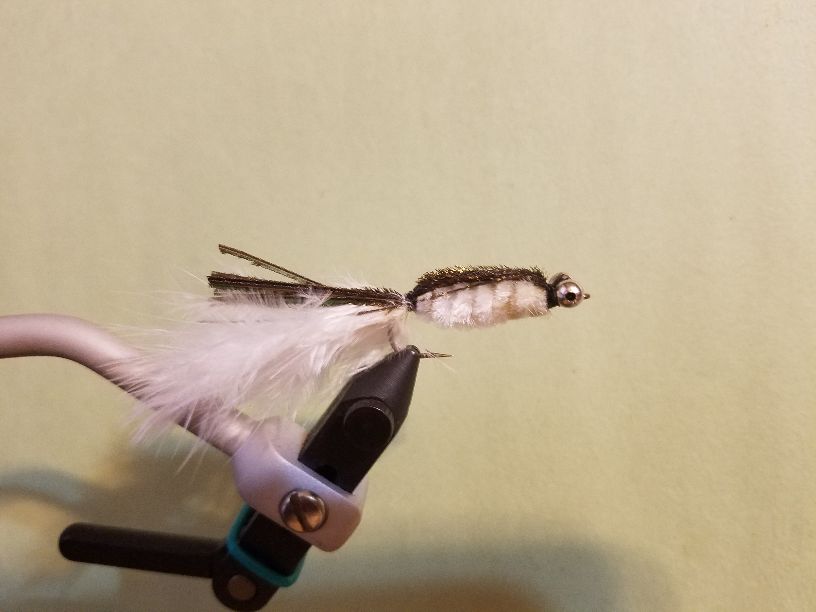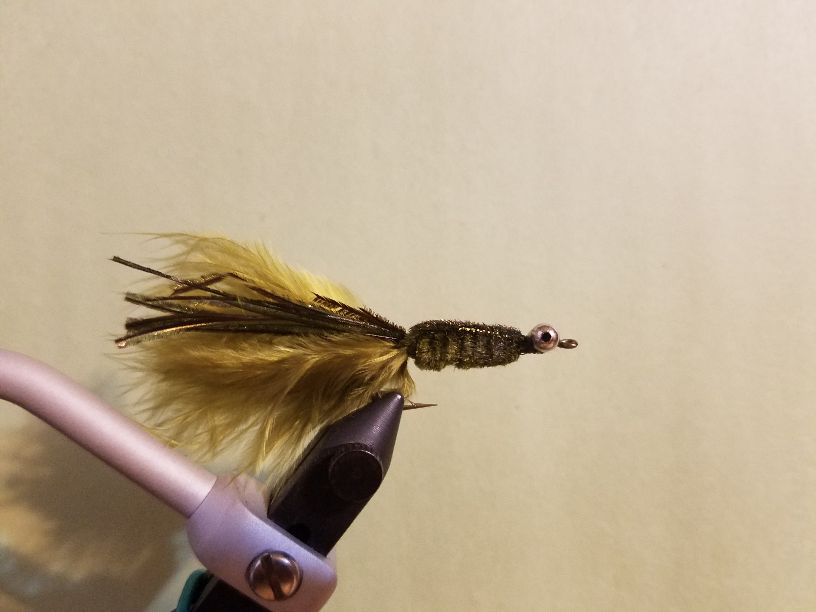whistler patterns always work, and your pattern looks like a great killifish
I too tie my salt whistler patterns without wing, size 6 4x-long
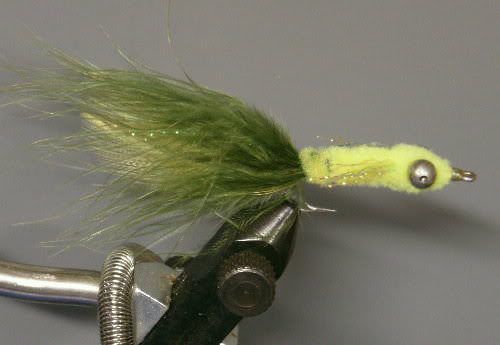
there's a pair of hen saddles beneath the marabou, helping this fly to push a little more water
Simplifying this fly by tying it smaller on a size 8 1x salt hook, smaller bead, shrimp-color chenille, and a short white tail, and they are killer under the dock lights at night
but in freshwater, a wing lets you change the fly to better imitate different baitfish families
wing on top, cyprinid and poecilid
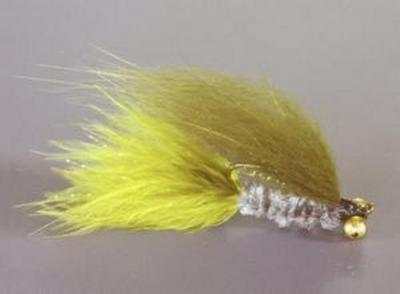
I've brought up clouds of minnows on a cats whisker before, and both image and action, couldn't tell the fly from the naturals.
Tied on stainless, they still make a pretty good mullet in the salt.
Wing on bottom - slide the chain bead back to 1/3 on the shank - and an extra head wrap, makes a perfect sculpin - I named this fly north fork whistler for the blennies in the San Gabriel.
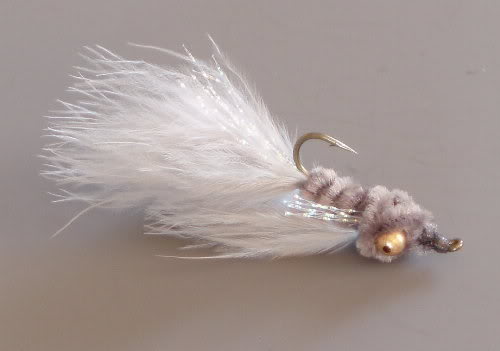
of course, blennies live in the salt.
changing the shape on a Tiemco 200R gives it a stinger hook for short white bass strikes

the very first fly pattern I learned to tie (Charlie Cypert's minnow for white bass - tied and sold by Billy Trimble way back in the Austin Angler) tied on stainless, makes a perfect generic food shrimp crab thingie in the salt, especially if you put the chain bead at the other end of the shank (it sinks more like a crustacean).

This is a simple pattern, chain bead, chenile wrap, braided mylar tubing folded over the hook eye, finish wrap at the tail, and comb out the mylar.
without the chenille wrap (with or without chain bead at back), flatten the mylar tubing in epoxy between wax paper, and you have a spoon.
Nothing acts more like a swimming crab than a spoon.

